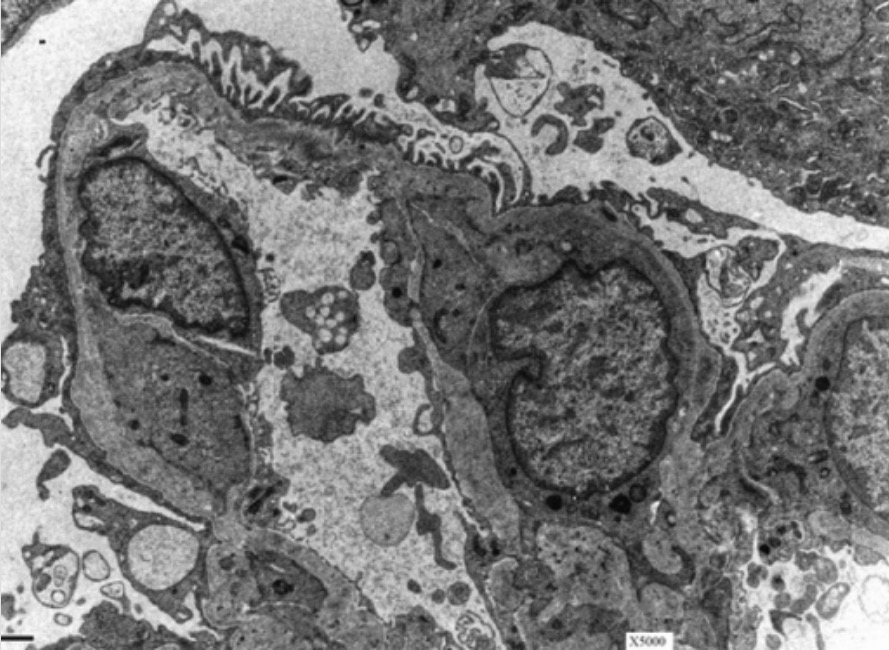Playlist
Show Playlist
Hide Playlist
Alport Syndrome
-
Slides Alport Syndrome.pdf
-
Reference List Pathology.pdf
-
Download Lecture Overview
00:01 Alport syndrome is also called hereditary nephritis, and affects approximately 1 in 5,000-10,000 people in the United States. 00:10 It is mostly inherited in an X-linked pattern and consists of a primary basement membrane disorder arising from mutations in genes encoding various members of the collagen type 4 protein family. 00:23 The signs and symptoms are those of a progressive glomerulonephritis, combined with sensorineural hearing loss and visual disturbances due to abnormalities affecting the cornea, lens, and retina. 00:37 The initial kidney manifestation is usually an asymptomatic, persistent microscopic hematuria, often with red cell casts. 00:45 Alport syndrome is seen in approximately 3% of children with kidney failure and 0.2% of adults with kidney failure. 00:54 The preferred method is by Next Generation Sequencing, searching for mutations in genes that encode the collagen IV protein (e.g., COL4 gene) Skin biopsy is also acceptable: Look for absent or mosaic basement membrane protein in X-linked cases, immunohistochemical staining against the alpha-5 chain of type IV collagen. 01:17 If the diagnosis is not confirmed by NGS or skin biopsy, then a kidney biopsy is performed in suspected cases. 01:24 In the EM photograph, note the irregular thickening, splitting, and lamellation of the glomerular basement membrane. 01:32 Compare this to the EM photograph of a normal GBM on the right.
About the Lecture
The lecture Alport Syndrome by Mohammad Hajighasemi-Ossareh, MD is from the course Glomerulonephritis.
Included Quiz Questions
Which of the following is associated with Alport syndrome?
- Loss of hearing
- Loss of sodium
- Loss of proprioception
- Loss of fine touch
- Loss of crude touch
Customer reviews
5,0 of 5 stars
| 5 Stars |
|
5 |
| 4 Stars |
|
0 |
| 3 Stars |
|
0 |
| 2 Stars |
|
0 |
| 1 Star |
|
0 |




